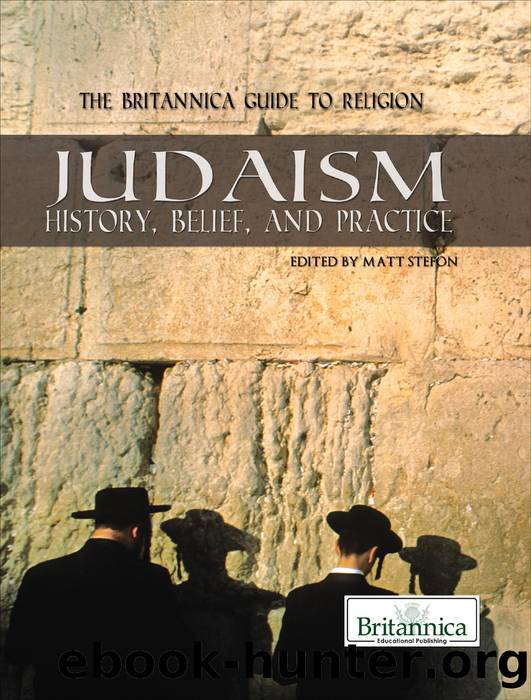Judaism by Britannica Educational Publishing

Author:Britannica Educational Publishing
Language: eng
Format: epub
Publisher: Britannica Educational Publishing
Published: 2012-03-14T16:00:00+00:00
TEN DAYS OF PENITENCE
The Ten Days of Penitence begin on Rosh Hashana and close with Yom Kippur. Already in Talmudic times they were viewed as forming an especially appropriate period of introspection and repentance. Penitential prayers (seliḥot) are recited prior to the daily morning service, and, in general, scrupulous observance of the Law is expected during the period.
According to Mishnaic teaching, the New Year festival ushers in the Days of Judgment for all of humankind. Despite its solemnity, the festive character of Rosh Hashana is in no way diminished. In Scripture it is called âa day when the horn is soundedâ and in the liturgy âa day of remembrance.â In the land of Israel and in the Diaspora, Rosh Hashana is celebrated on the first two days of Tishri. Originally celebrated by all Jews on Tishri 1, calendrical uncertainty led to its being celebrated for an additional day in the Diaspora and, depending upon the circumstances, one or two days in Palestine. After the calendar was fixed in 359, it was regularly celebrated in Palestine on Tishri 1 until the 12th century, when Provençal scholars introduced the two-day observance.
The most distinctive Rosh Hashana observance is the sounding of the ramâs horn (shofar) at the synagogue service. Medieval commentators suggest that the blasts acclaim God as ruler of the universe, recall the divine revelation at Sinai, and call for spiritual reawakening and repentance. An expanded New Year liturgy stresses Godâs sovereignty, his concern for humankind, and his readiness to forgive those who repent. On the first day of Rosh Hashana (except when it falls on the Sabbath) it is customary for Jews to recite penitential prayers at a river, symbolically casting their sins into it in a ceremony called tashlikh (âthou wilt castâ). Other symbolic ceremonies, such as eating bread and apples dipped in honey, accompanied with prayers for a âsweetâ and propitious year, are performed at the festive meals.
Download
This site does not store any files on its server. We only index and link to content provided by other sites. Please contact the content providers to delete copyright contents if any and email us, we'll remove relevant links or contents immediately.
| Publishing & Books | Research |
| Writing |
Asking the Right Questions: A Guide to Critical Thinking by M. Neil Browne & Stuart M. Keeley(5632)
Autoboyography by Christina Lauren(5183)
Eat That Frog! by Brian Tracy(4432)
Dialogue by Robert McKee(4321)
Sticky Fingers by Joe Hagan(4100)
Journeys Out of the Body by Robert Monroe(3569)
Annapurna by Maurice Herzog(3423)
Full Circle by Michael Palin(3382)
Schaum's Quick Guide to Writing Great Short Stories by Margaret Lucke(3318)
Elements of Style 2017 by Richard De A'Morelli(3306)
The Art of Dramatic Writing: Its Basis in the Creative Interpretation of Human Motives by Egri Lajos(3015)
Atlas Obscura by Joshua Foer(2898)
The Diviners by Libba Bray(2884)
In Patagonia by Bruce Chatwin(2875)
Why I Write by George Orwell(2874)
The Fight by Norman Mailer(2847)
The Mental Game of Writing: How to Overcome Obstacles, Stay Creative and Productive, and Free Your Mind for Success by James Scott Bell(2844)
Venice by Jan Morris(2523)
The Elements of Style by William Strunk and E. B. White(2440)
